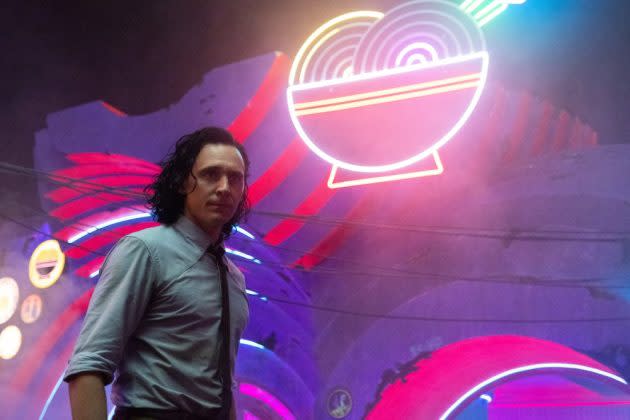‘Loki’ DP Explains How She Filmed That Complex One-Shot Sequence
- Oops!Something went wrong.Please try again later.
- Oops!Something went wrong.Please try again later.
- Oops!Something went wrong.Please try again later.
- Oops!Something went wrong.Please try again later.

Autumn Durald Arkapaw made Variety’s 10 Cinematographers to Watch list in 2014, and she just landed her first Emmy nomination for lensing for a single-camera series for Disney+’s “Loki.”
“Loki,” which earned six noms, was her first foray into the comic book realm. She met with director Kate Herron and the two immediately hit it off. The bonus was that she already was a fan of Tom Hiddleston’s leading character. “If I was watching anything Marvel, he stands out. So, I already had a love for his character,” she says.
More from Variety
The series throws the God of Mischief into a world inspired by “Blade Runner 2049,” “Brazil” and even “Seven.”
For the climactic ending of the third episode, “Lamentis,” production designer Kasra Farahani built the city of Shuroo. Loki and Sylvie (Sophia Di Martino) race through the streets as they search for a getaway spaceship. As the frantic chase played out, Arkapaw captured the characters with a single tracking shot.
She says the sequence was one of the first she and Herron had talked about, and their plan evolved as they got closer to shooting. The key to its success was the time the team had to work on the scene in previz, discussing concepts, influences and doing test shots before bringing the actors in.
“Both ‘John Wick’ and ‘Children of Men’ were influences for that sequence,” says Arkapaw.
“At one point we wanted a motorcycle in there, that they would get on and jump off after, but that made it complex. We wanted it to feel humanistic.”
Arkapaw used a Steadicam to pull off the one-shot, which was several cuts but seamlessly woven together. It was Farahani who had the idea of painting each street block a different UV color. “When you turned the corner, you felt like you got a different emotional response to the color. I had never worked with UV paint,” says Arkapaw.
The idea was that the lighting needed to feel emotional. Farahani incorporated hundreds of lights into the sets that could be programmed. “We did a pre-light the week before shooting and dialed in all the colors to see what looked good on camera.”
The framing was just as important. At first, the cinematographer tested the camera lens without the actors. Panavision anamorphic was her lens of choice — the company expanded t-series anamorphic lenses for her and she explored 35mm and 40mm lens options. “We needed to fit two characters into the frame, but we also needed to see the world, but you don’t want to be too wide that you can’t come in close on someone’s face,” says Akapaw. “You don’t want too long of a lens because you don’t want the background to be compressed.”
In the end, she found a sweet spot between the two and working with Herron, VFX, Farahani, everything came together to pull off the sequence seamlessly. Up next, Akapaw delves deeper into the world of Marvel. She is cinematopgrapher on “Black Panther: Wakanda Forever,” which is due out later this year.
Best of Variety
Sign up for Variety’s Newsletter. For the latest news, follow us on Facebook, Twitter, and Instagram.
